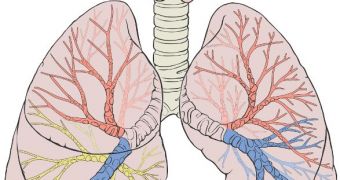Officials at the US National Institutes of Health (NIH) say they awarded scientists at the University of Texas Medical Branch in Galveston with a two-year, $1.25 million grant. The purpose of the research will be developing a technique for growing customized human lung tissue in the lab.
The procedure will enable experts to obtain 3D models of the human lung, which will behave and function identically to the real deal. These synthetic organs will be primarily used for biomedical studies and for testing new drugs against a variety of conditions affecting the human lung.
Scientists will also infect these lungs with various pathogens, and then study how the diseases progress under a wide variety of conditions. This will provide doctors with more data to consider when they custom-tailor treatments for each individual patient.
“We've been working on tissue engineering for a long time, and developing this kind of model has always been one of our goals. These systems could really change the paradigm of what we do,” UTMB professor Joan Nichols says in response to the announcement.
Her team faces two main challenges in its research. The first is generating an extracellular protein network, a sort of scaffolding on which the actual cells making up the artificial lung will be placed. The second challenge is figuring out the exact type and amount of cells that will go on the scaffold.
According to Nichols, this support structure can be obtained either by creating it artificially, or by harvesting one from a pig lung. In the second scenario, special techniques are used to remove the existing cells, leaving experts with a clean scaffold.
“Like any organ, the lung has a lot of different cell types in it. These tissues can be as complex as we want, but it's best to just start very simple and then build off of that,” the team leader goes on to say.
“We can evaluate the responses of just pneumocytes, or endothelial cells and pneumocytes together, or endothelial cells and pneumocytes and immune cells, like macrophages and neutrophils. It's important to know what each individual piece does,” Nichols adds.
If her team succeeds in achieving these two objectives, then the researchers may be eligible to receive support from the NIH for a second phase of the project, covered by a three-year grant, EurekAlert reports.
The National Institutes of Health are providing funding for similar efforts focused on other organs, including the heart, liver, intestine, skin and kidneys. Within less than a decade, experts should have access to synthetic models for all these organs.

 14 DAY TRIAL //
14 DAY TRIAL //